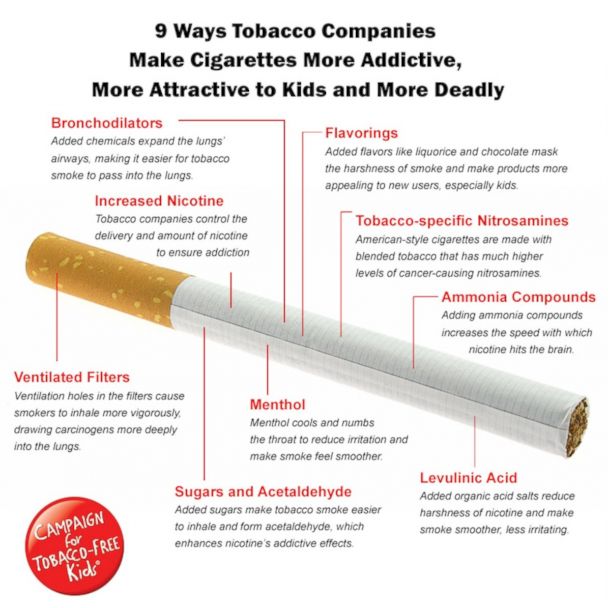Big Tobacco's Tricks Make Cigarettes More Harmful, Health Report Claims
 Design changes by tobacco companies in recent decades have made cigarettes "more addictive, more attractive to kids and even more deadly,"according to a health report released today by the Campaign for Tobacco-Free Kids. The report concluded that cigarettes are more harmful today than in 1964 when the surgeon general first linked tobacco to health risks.
Design changes by tobacco companies in recent decades have made cigarettes "more addictive, more attractive to kids and even more deadly,"according to a health report released today by the Campaign for Tobacco-Free Kids. The report concluded that cigarettes are more harmful today than in 1964 when the surgeon general first linked tobacco to health risks.
"The tobacco industry has taken a bad product and made it even worse," said Matt Myers, president of the Campaign for Tobacco-Free Kids, in an interview with ABC News. The report urges the FDA to more closely regulate cigarette design and ingredients.
The report outlines nine key design choices and chemical additions that Myers said "made it easier for kids to start and harder for adults to quit."
For example, increased nicotine and ammonia, which speeds up the rate that nicotine reaches the brain, make the products more addictive, the report says. Flavors like licorice or chocolate "mask the harshness of the smoke and make tobacco products more appealing for young people," according to the report. While the Tobacco Control Act of 2009 banned flavors, they can still be added at low levels.
Cigarettes are more harmful because of increased levels of nitrosamines, a type of carcinogen, and ventilated filters, which allow a smoker to inhale more deeply drawing carcinogens into the lungs, according to the report.
The research was compiled with internal documents released by the tobacco industry, Surgeon General reports and published research.
Philip Morris USA, the largest cigarette manufacturer in the U.S., said it has not read the report and cannot comment on the specific findings, but that the FDA receives information about cigarette design and manufacturing under its regulatory authority. Philip Morris has "provided the HHS with a list of ingredients added to tobacco in the manufacture of cigarettes sold in the U.S." annually since 1986, it said in a statement to ABC News. Additionally, it said that the FDA has the authority to regulate nicotine, reduce or eliminate harmful ingredients and "mandate changes in the design of tobacco products."
Smoking remains the leading preventable cause of death, according to the Center for Disease Control, and kills 480,000 Americans yearly. It costs the country nearly $300 billion annually, of which at least $133 billion is in direct medical care for adults, according to the CDC.
The report was released on the fifth anniversary of the Tobacco Control Act, which gave the FDA the authority to regulate aspects of the tobacco industry. Myers said he hopes the report will serve as a "critical wake up call for smokers" and a "spark for the FDA to act and to act boldly."